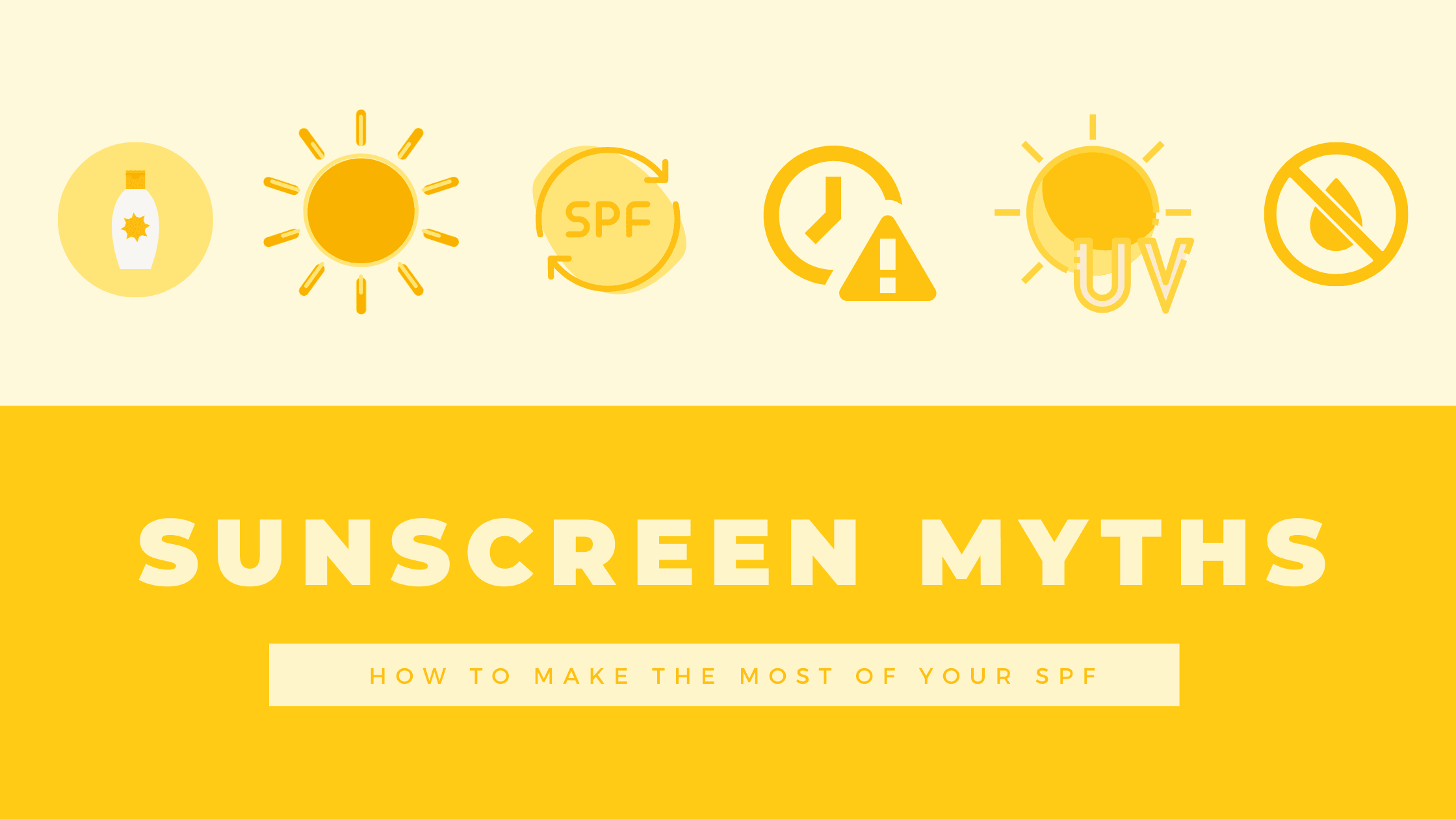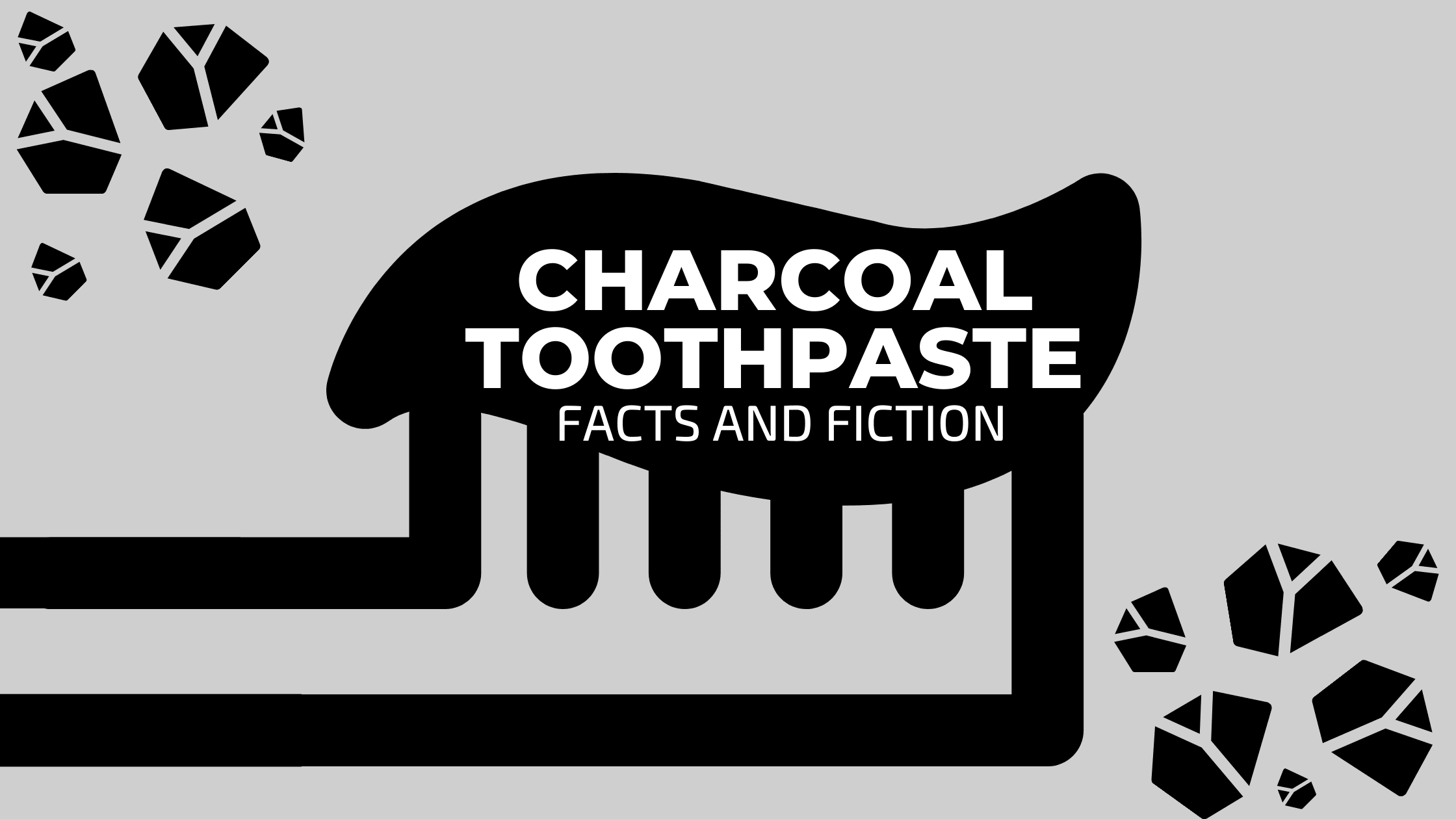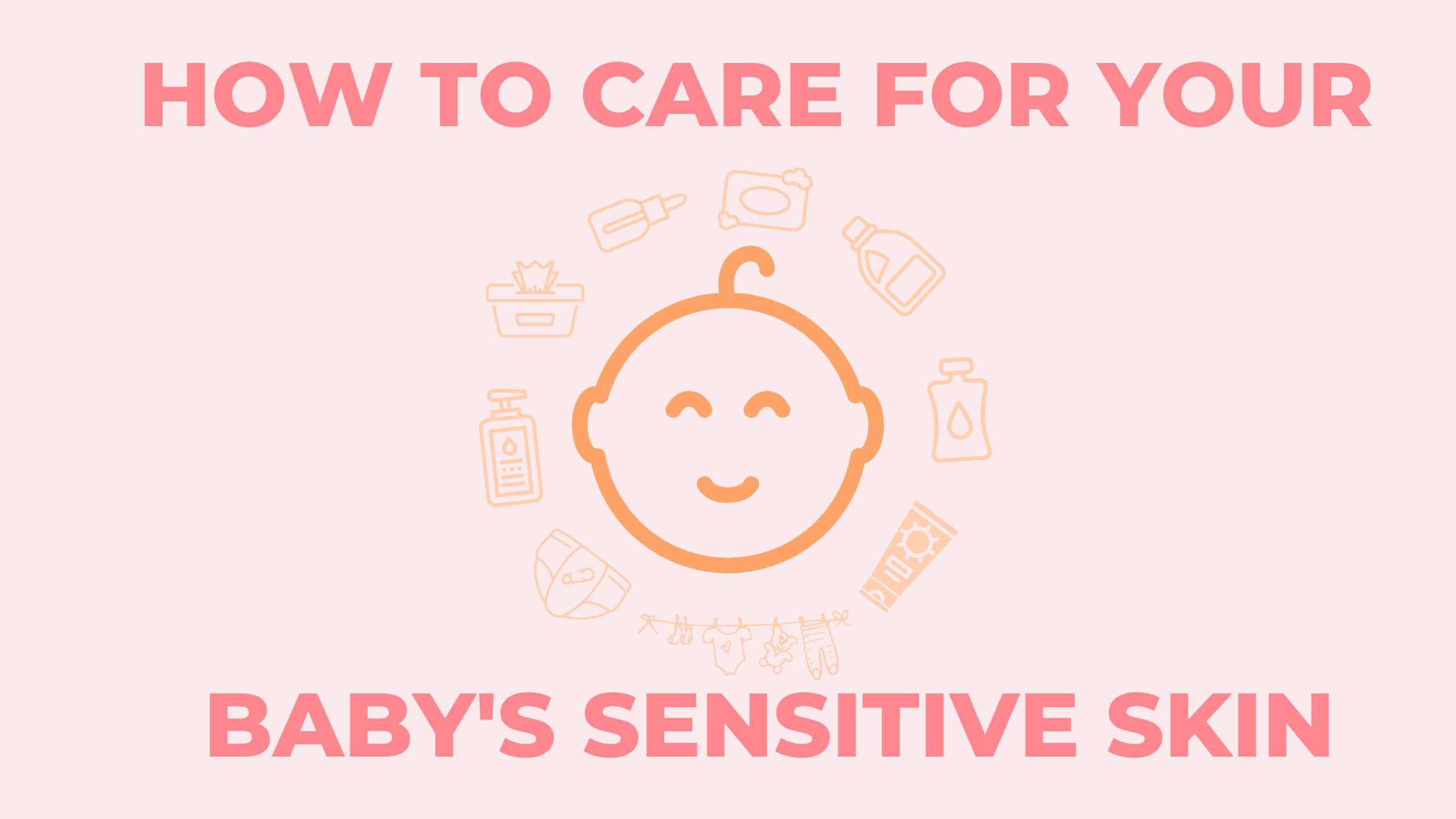
14 Common Myths About Sunscreen
Sunscreen has come a long way since its early days when it was thick, washed off easily, and only had an SPF of 2. Now there’s hundreds of sunscreen options on the market with SPF values ranging from 4 to 100+. Countless research has been done on UV rays and how to adequately protect your skin from the sun, but there’s still multiple misconceptions about sunscreen.
Let’s debunk some of the myths around sunscreen so you can ensure your skin’s protection this summer and year round.
Myth 1: Sunscreen is the best shield against the sun
Sunscreen cannot completely protect against UV rays, even if you are one of the select few who manages to never miss patches of skin. Even the highest of SPF sunscreen can only block about 99% of UV rays, and it wears down over time.
Wearing protective clothing, seeking shade, and avoiding time in the sun when it’s brightest (from 10am-4pm) are the subsequent building blocks for sun protection once you’ve lathered on a layer of sunscreen.
According to the CDC, a combination of all four sun protection measures is your best bet for strong, dependable sun protection.
Myth 2: You don’t need sunscreen if it’s cloudy or rainy
Clouds are made up of water vapor which is not an adequate shield from UV rays. You may not feel the heat of the sun, but you still see the light which means UV rays are making their way through the clouds and to your skin.
If you are being exposed to sunlight in any capacity, it has the ability to damage your skin, so rule of thumb: unless the sun has gone down for the day, sunscreen is necessary.
Myth 3: The only damage the sun can cause is a sunburn
A sunburn only lasts a few days, but the damage caused by UV rays can last a lifetime.
There are two types of ultraviolet rays that reach the earth’s surface and our skin — UVB and UVA. UVB rays are responsible for producing sunburn, and UVA rays cause deeper damage to the skin that can result in premature signs of aging like wrinkles and discoloration. Both UVA and UVB rays play a role in skin cancer formation, so broad spectrum sunscreen is the best skin care product for anti-aging.
Myth 4: You don’t need sunscreen if you're indoors
Unless you’re sealed in a windowless room, UV rays are still having a go at your skin. UVB rays can be filtered out by most windows, but some UVA rays can still pass through, so you should be wearing sunscreen indoors. So if you sit in an office with big windows all day, are going for a long drive, or just can’t get over how great the natural lighting is in your apartment, sunscreen should be an everyday priority.
Leave your sunscreen in plain sight – with your toothpaste or other morning skin care products – so that you don’t forget to apply it.
Myth 5: The higher the SPF the better
There are all kinds of sunscreens on the market, ranging from SPF 4 “tanning lotions” all the way to SPFs of over 100. So what does this SPF number mean?
In short: SPF specifically refers to the protection against UVB rays, and how long you can be exposed before the skin starts to burn.
The amount of time it takes your skin to burn in the sun without sunscreen multiplied by the SPF equals the number of minutes you can spend in the sun without getting burned if the sunscreen is adequately applied.
SPF 15 blocks about 93% of UVB rays, SPF 30 blocks about 97%, 98% with SPF 50, and 99% with SPF 100. No sunscreen can completely block UV rays, and the difference between an SPF 15 and 100 is not all that different, so don’t let a super high SPF sway your sunscreen choices.
The Skin Cancer Foundation and the American Academy of Dermatology (AAD) recommend a sunscreen with an SPF of at least 30, but say anything higher isn’t necessary.
Myth 6: You only need to apply sunscreen once a day
Sunscreens are broken down by sunlight, so it is not as effective as the day goes by. In order to perform to its best ability, it needs to be reapplied every 2 hours or after swimming, bathing, or excessive sweating.
If you spend most of your day inside, reapplication isn’t as crucial, but for outdoor activities, keep sunscreen handy and reapply liberally.
Myth 7: Waterproof sunscreen
While sunscreen brands may claim to be waterproof or water resistant, no sunscreen is actually completely waterproof. According to the FDA, sunscreen cannot claim to be waterproof and can only claim water-resistance for up to 80 minutes before reapplication is necessary. Even then, all sunscreen needs to be reapplied after two hours anyway, so it’s not much of a difference. Regardless of whether you are using waterproof sunscreen or not, you should reapply it after swimming or excessive sweating.
Myth 8: SPF is the only factor that matters
Not all sunscreen is created equal, and as mentioned in Myth #5, a higher SPF isn’t much better than a standard SPF 30. Sunscreen can be broken down into two categories: chemical and physical/mineral sunscreens. Chemical sunscreens sink into the skin and absorb UV rays, whereas physical sunscreens sit atop the skin and block UV rays. Which one you use comes down to preference, but what’s most crucial is that you chose a broad spectrum sunscreen. A sunscreen labeled “broad spectrum” ensures that it protects against both UVA and UVB rays which not all sunscreens do.
Myth 9: You don’t need sunscreen if you have dark skin
More melanin does help to diffuse UVB rays and prevent sunburns, but one study indicated that about 30 percent of darker-skinned ethnic groups reported at least one sunburn in the previous year, and while individuals with dark skin are at a lower risk for skin cancer, it is still a possibility.
Myth 10: Sunscreen doesn’t expire
If you’re holding on to sunscreen from summer vacation 5 years ago, they aren’t going to be as effective as a fresh tube. The FDA requires that sunscreens remain at their original strength for at least 3 years.
Check the outside of the bottle for a stamped or imprinted expiration date, and ensure you use it up before then. You should be using enough sunscreen (about one ounce for the whole body) to go through a tube far before the expiration date anyway, so if you’re left with a half full bottle of sunscreen when the expiration date rolls around, it’s best you start packing on more product.
It’s also recommended that you store sunscreen in a cool, dark, dry place because heat, light, and moisture can wear down and not be as effective, even before the expiration date printed on the tube. If you’re hopping in the pool, wrap your sunscreen in your towel, bag, or clothing to help block some of these elements.
Myth 11: Sunscreen ingredients are bad for you
There’s some fear surrounding sunscreen because chemical sunscreen ingredients have been found in the bloodstream after usage. Some of these active ingredients like oxybenzone have gained a bad reputation because of claims that they can disrupt hormone production.
There’s no conclusive study to verify this, but if you are concerned about chemical sunscreens there’s always the option of mineral sunscreen which does not penetrate the skin. The titanium dioxide and zinc oxide used in mineral sunscreen are “generally recognized as safe and effective” (GRASE) by the FDA.
How about that rumor that sunscreen can cause cancer? One study shows a correlation between sunscreen usage and melanoma, but the people using sunscreen in this study were more likely to travel to sunny climates so it was the higher exposure to sun that caused the correlation.
There's no solid evidence that any sunscreen ingredients cause cancer, but do you know what definitely can cause cancer? The sun. Skin cancer. Wear sunscreen.
Myth 12: Sunscreen causes breakouts
While the thick, greasy, coconut scented sunscreens that you buy in bulk bottles may sit on your skin and clog pores, if you choose a quality, non comedogenic sunscreen with no added fragrance, breakouts are unlikely.
There’s also the possibility of breakouts from a sunscreen allergy (see: Myth #14) which is also preventable.
Myth 13: You won’t get enough vitamin D if you wear sunscreen
Our body creates vitamin D from direct sun exposure on unprotected skin. So how can you get enough vitamin D if you always wear sunscreen? Well, according to dermatologists and scientists, we only need direct sun exposure for about 5-30 minutes a day. Since UV rays can penetrate clothing and windows, and sunscreen loses effectiveness over time while you wear it, it’s more than likely that you’ll be getting just enough of the sun's rays to produce vitamin D.
On top of that, if you are really worried about getting enough vitamin D, you can also supplement vitamin D or get it from your diet in foods like salmon, tuna, or mushrooms.
Myth 14: Sunscreen irritates sensitive skin
Ok so this one’s not completely a myth. Sunscreen can irritate sensitive skin, and it’s possible that you’re allergic to one or more sunscreen ingredients. Chemical sunscreen ingredients like oxybenzone and added fragrance are common irritants and allergens so if your sunscreen is irritating your skin, look out for these ingredients on the label.
However, there is still hope for our sensitive skin friends. Zinc oxide and titanium dioxide, the active ingredients in mineral sunscreens, have a much lower risk of allergic reaction.
Conclusion
Don’t fall victim to believing these myths, and you’ll set yourself up for a lifetime of healthy skin. Spending time in the sun shouldn’t be something to fear, and if you're sunscreen savvy, you can safely enjoy the warmth and light of our closest star.
Take a look at our Zinc Oxide Natural SPF 30 if you're looking for a sunscreen that is perfect for sensitive skin.
Read more here about choosing sunscreen for sensitive skin.
More Information
Difference Between UVA and UVB Rays - University of Iowa Hospitals and Clinics
Sunscreen - Yale Medicine
Does a High SPF Protect My Skin Better - Skin Cancer Foundation
Sunscreen FAQ - American Academy of Dermatology
Sunscreen Regulations - FDA



Leave a comment
This site is protected by hCaptcha and the hCaptcha Privacy Policy and Terms of Service apply.